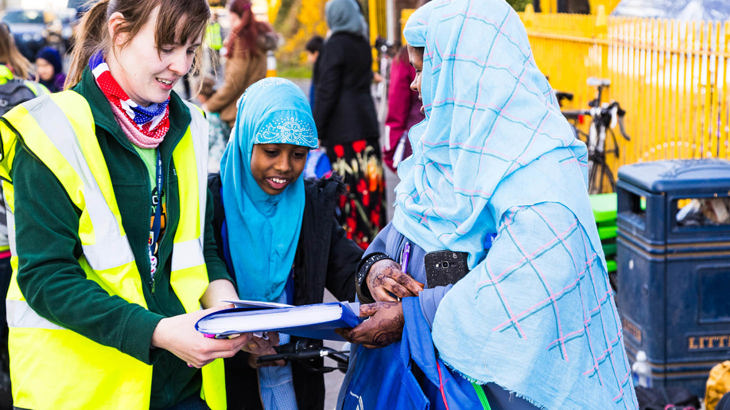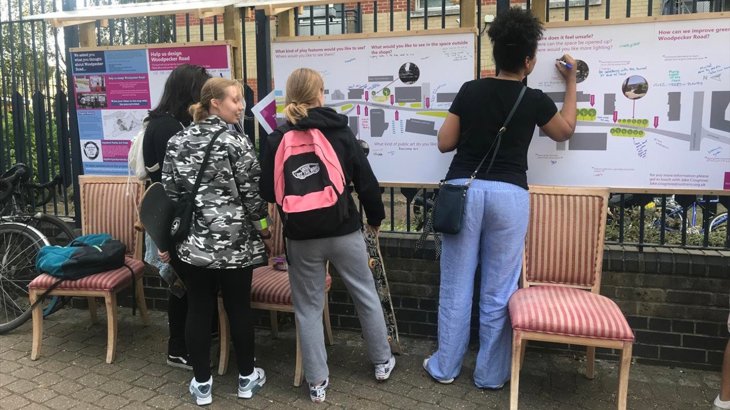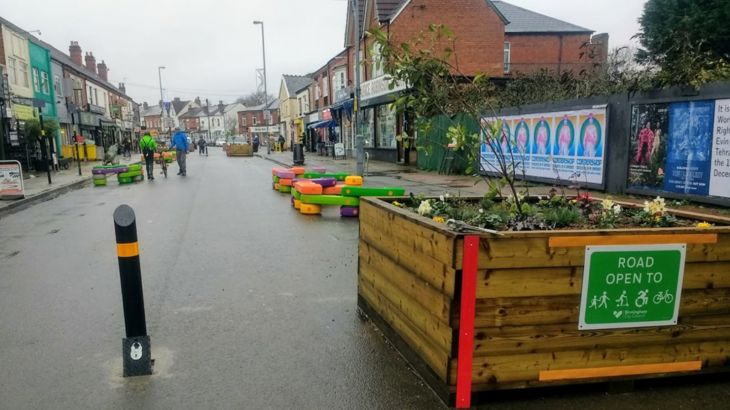This section touches on the other elements such as community engagement, monitoring and behaviour change, which are essential for the success of a low traffic neighbourhood.

This guide outlines the steps to design low-traffic neighbourhoods.
Design is, however, only one of the elements required for the successful implementation of a low-traffic neighbourhood, and arguably not the most important one.
Other key elements include:
Meaningful engagement, on the ground
Most successful LTN schemes are those that are co-created with local community members, who know their area best. An important part of co-design which is often missed, is defining success and agreeing desired outcomes for the LTN from the start.
This is often only achievable through more in-depth workshops.
Community engagement activities can include:
- Drop-in workshops to discuss issues, solutions and proposals,
- pop-ups in areas of high footfall (outside stations, schools, supermarkets and religious venues), where people of all walks of life can find out about the project,
- leaflets and GPS-tracked letter drops, reaching everyone, including those without internet access,
- posters and feedback boards (see Figure 2a) posted around the neighbourhood,
- online engagement tools (maps, surveys), and the associated response analysis strategy,
- community walkabouts,
- filter activations with play, planting and paint allowing people to reimagine the space.
It is essential that engagement amplifies seldom heard voices: in particular, those on lower incomes, ethnic minorities, children, older people and those with disabilities.
Considerations such as accessibility, translation, timings are important.
On-street engagement is invaluable at capturing a wider diversity of views, in contrast to online surveys.
A good engagement process will help identify local champions and dispel misinformation or fears associated with the proposed changes.

Figure 7a: Community engagement board in Lewisham
Data collection and monitoring
It is essential to collect data both as a baseline and after the scheme has been implemented, to build the case for the scheme, assess the impact and inform any changes.
Data should not be limited to traditional transport surveys and should include:
- public perception
- transport: traffic volumes (including local vs though traffic) for motorised vehicles, walking and cycling
- transport origin and destination surveys
- journey time data for all modes (showing how the scheme has improved the convenience of active travel)
- travel diaries to monitor shifts in mobility patterns or mode choice
- physical health: air quality, frequency of physical activity, obesity levels, life expectancy
- economy: spend in local shops, frequency of local shopping trips
- wellbeing: noise, frequency of social interactions on the streets, number of friends on the street, children’s radius of independence.
Behaviour change programmes
These are crucial in enabling local residents and businesses to switch from car to active travel trips, and are also essential in understanding barriers to active travel faced by different groups.
They can include cycle training, personalised travel planning, cargo bike initiatives and school programmes.
Experience in Waltham Forest has shown the importance of establishing dedicated programmes for faith groups or demographics which are underrepresented in active travel.

Implementation mechanism
We strongly recommend trialling LTNs through the experimental traffic order process, which ensures consultation takes place once the scheme is in place, and allows quick and responsive tweaks based on performance.
Even where experimental LTNs are introduced rapidly, pre-implementation monitoring and engagement remain essential.
The points above are equally if not more important than the design of the scheme itself but, for conciseness, are discussed no further in this guide.
Sustrans can provide more information, as required.

